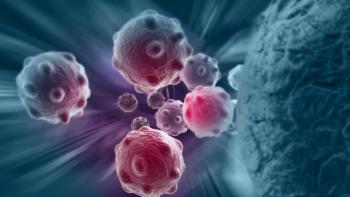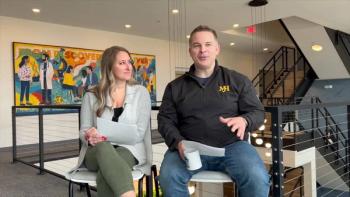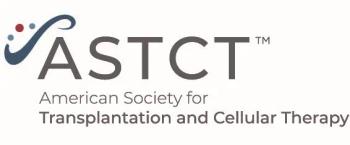
- ONCOLOGY Vol 14 No 3
- Volume 14
- Issue 3
Commentary on Abstracts #4419, #388, #4404, and #4358
One important future direction for rituximab (Rituxan) is to expand its therapeutic role into other CD-positive disorders. Rituximab induces responses in up to one-third of patients with relapsed or refractory aggressive non-Hodgkin's lymphoma
One important future direction for rituximab (Rituxan) is to expand its therapeutic role into other CD-positive disorders. Rituximab induces responses in up to one-third of patients with relapsed or refractory aggressive non-Hodgkin's lymphoma (NHL), mantle cell NHL, and lymphoplasmacytic lymphomas (Winkler et al, abstract #4419; Coiffier et al: Blood 92:1927-1932, 1998; Foran et al: J Clin Oncol 18:317, 2000), although response rates may depend on histology (abstract #4419).
Activity of rituximab in transformed follicular NHL was noted by Winkler et al (abstract #4419). Among seven patients, they observed one complete remission (CR) and two partial remissions (PRs). Based on the impressive results seen with the combination of CHOP and rituximab in follicular NHL
(Czuczman et al: J Clin Oncol 17:268-276, 1999), Vose et al took a similar approach in previously untreated patients with large B-cell NHL (abstract #388). In contrast to the Czuczman regimen, Vose et al administered the antibody on day 1 of each 21-day cycle and began CHOP on day 3. A total of 33 patients completed six cycles of therapy and were considered evaluable for response.
The overall response rate was 97%, including 61% CRs. This figure is comparable to the results with this regimen in follicular NHL and is better than would generally be expected from CHOP alone in this histology (Fisher et al: N Engl J Med 328:1002-1006, 1993). With a median follow-up of 24 months, the median response duration was 18+ months. No evidence of progression was noted in any of the complete responders or in seven of the partial responders. Of the 13 patients who were bcl-2 positive prior to therapy, 11 became bcl-2 negative. The combination of CHOP and rituximab produced no additional toxicity beyond what would have been expected with CHOP alone. Other investigators have also shown high response rates with a similar regimen (Ruchlemer et al, abstract #4404).
A randomized trial conducted by the Eastern Cooperative Oncology Group (ECOG) and Cancer and Leukemia Group B (CALGB) is evaluating CHOP with or without rituximab in older patients with aggressive NHL. Small numbers of patients with aggressive NHL have been treated with anti-body combined with EPOCH (etoposide, Oncovin, cyclophosphamide, and doxorubicin HCl) (Aung et al, abstract #4358; Wilson et al: J Clin Oncol 11:1573-1582, 1993), and a study of that combination is being conducted at the National Cancer Institute (NCI).
Unfortunately, we are creating a problem reminiscent of that encountered in trying to interpret data on interferon in low-grade NHL: It will be difficult to compare the results of various trials because of the differences in regimens and schedules of administration in each of them.
Articles in this issue
almost 26 years ago
FHIT Gene, Smoking, and Cervical Canceralmost 26 years ago
IOM Medical Error Estimates Questioned, But Legislation Consideredalmost 26 years ago
Less Toxic Therapies for Hodgkin’s Disease May Reduce Secondary CancersNewsletter
Stay up to date on recent advances in the multidisciplinary approach to cancer.


















































































